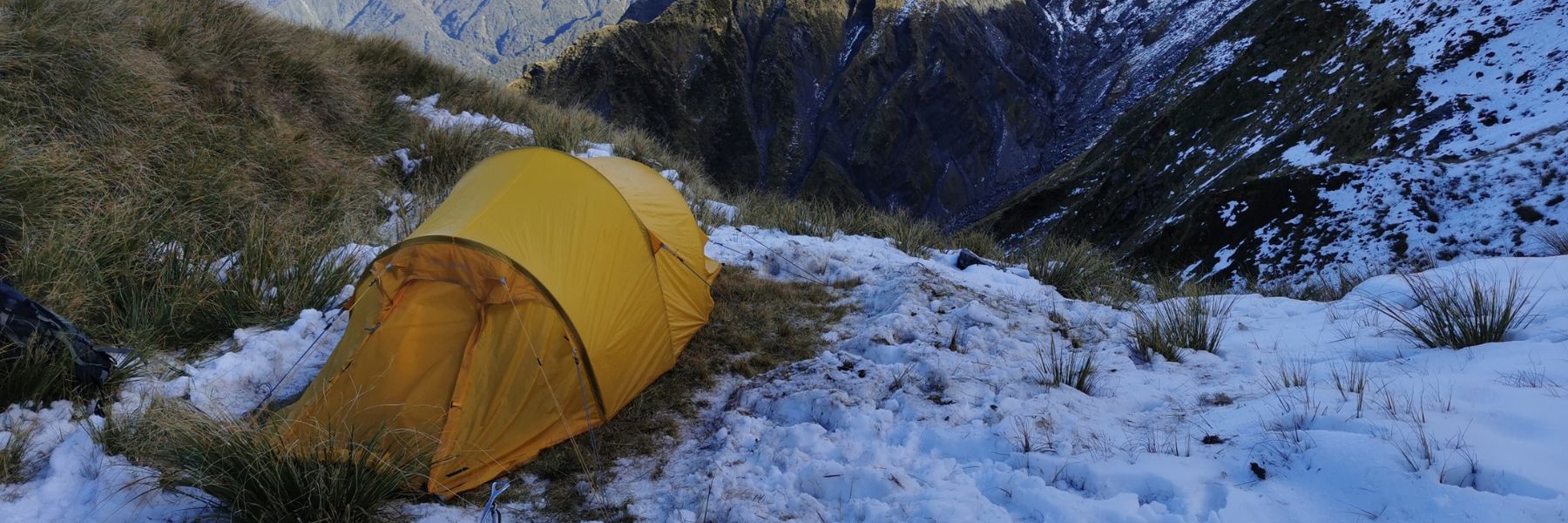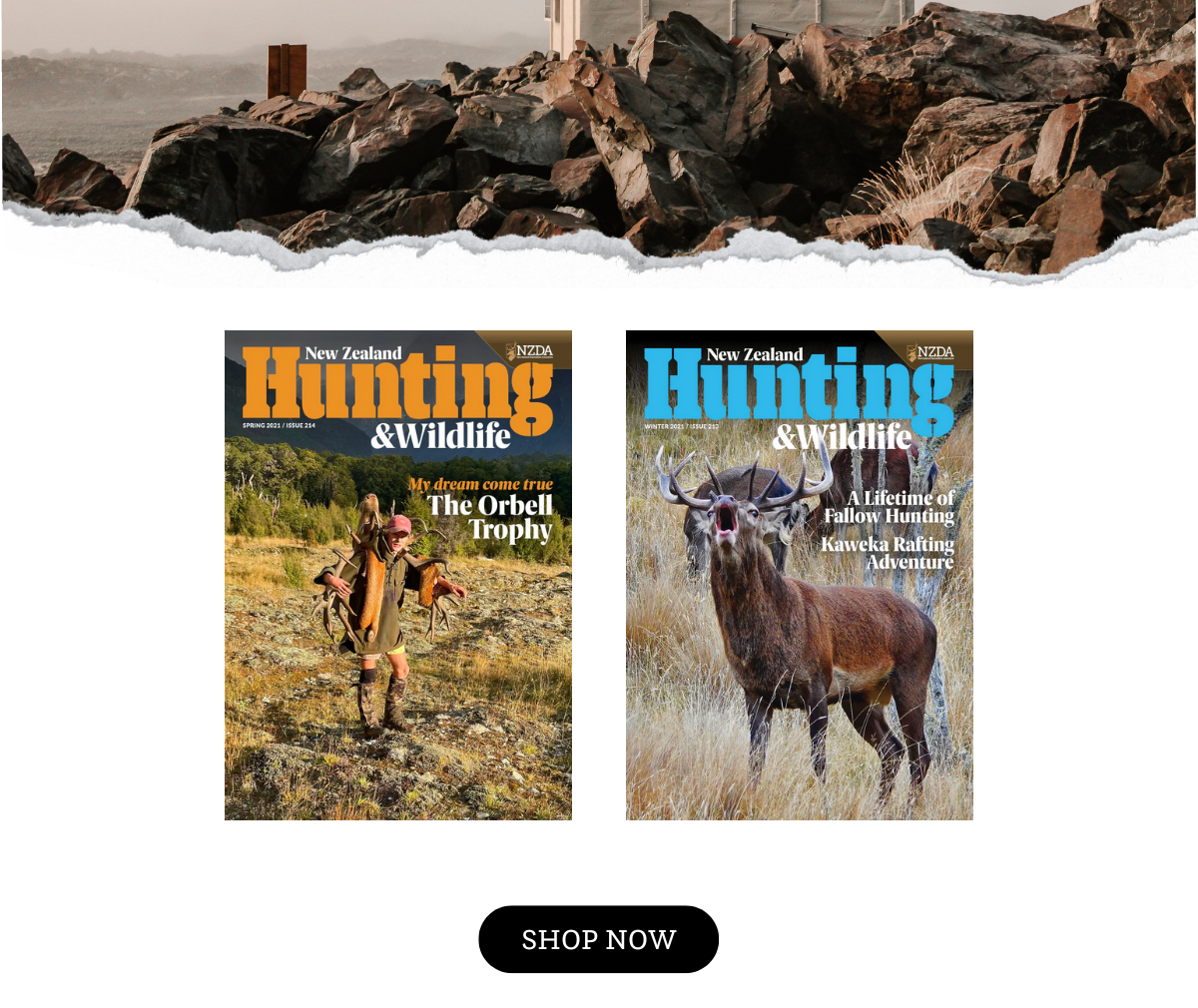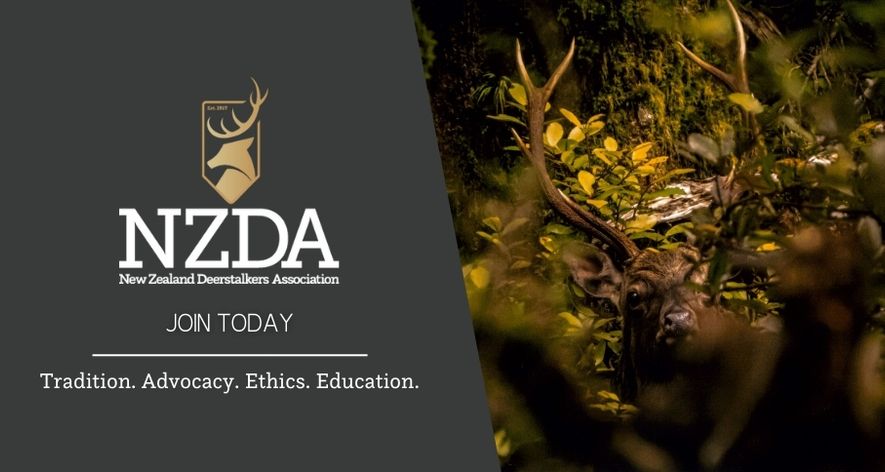3 January 2023
Hunting and Wildlife Magazine - Winter Issue 221
Words By: Elliot Riley
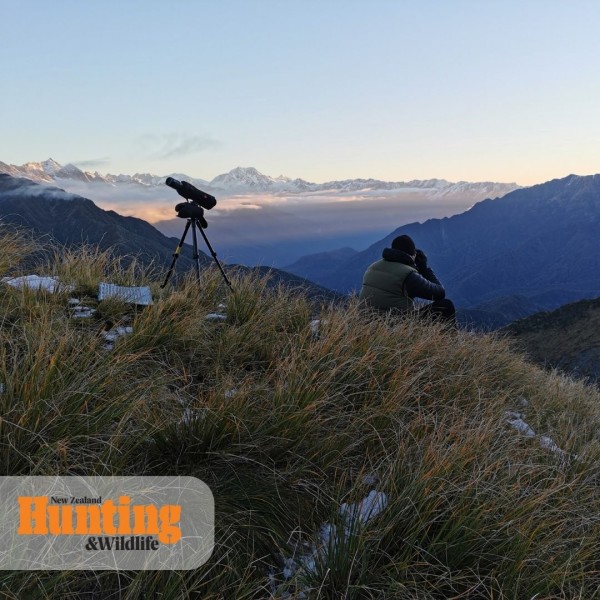
Good optics and hours of glassing produced numerous animal sightings.
I received a late call-up to join a tahr ballot because, unfortunately, my friend Brent's plans to return home from Australia for the 2021 ballot were cancelled due to Covid. I got the lucky chance to join a party in Brent’s spot going into the Barlow block in the Adams Wilderness Zone for the second period. The long-range forecast for the West Coast was looking exceptionally good and, so with my wife's approval, I embarked on the trip. It was my first tahr rut ballot.
To meet the guys traveling from Wellington, we planned to gather at the Heli Pad in Whataroa early morning on the 30th of April. After packing my gear and loading the truck, I left Nelson after work on Thursday and arrived at the carpark in Whataroa just after midnight. I spent a cold night in the back of the truck and woke up to the sound of the Heli Services 500 landing. With clear skies and eight days of hunting in the wilderness zone ahead of us, the excitement levels were high. We loaded our gear into the helicopter and took off.
Our party consisted of myself, Gwyn Thurlow, Peter Thurlow (Brent and Gwyn’s father), and Wally Potts, a Wellington branch stalwart. None of us had been to the Barlow before, so we were eager to explore new territory. After studying satellite imagery and topo charts for more than a week, I was finally getting a chance to see the country in person. As we flew over the Perth River and headed up the Barlow, our eyes were glued to the windows and the epic views all around us. The landscape showcased a mixture of snow, ice, steep faces, thick monkey scrub, and open tussock tops - quintessential South Island alpine country.
Once we set up base camp and received a warning about a gang of marauding kea from the hunters in the first period, we set out to explore the block. Gwyn and I teamed up for the week, determined to cover as much ground as possible. The snow level was still low from the previous two days’ snowfall, so we hoped to find some bulls feeding down low. We decided to spend the day glassing and plotting a route to the tops while waiting for the snow to melt. Slowly, we made our way up the glacial moraine wall on the true right of the river, just upstream from base camp. The lower region was filled with thick scrub, but it soon opened up into tussock. As we reached the top of the moraine wall, we were greeted with a snow-filled basin surrounded by steep creeks and tussock faces. The sun began to beam through the mountains, revealing fresh signs of animals moving across the faces in front of us.
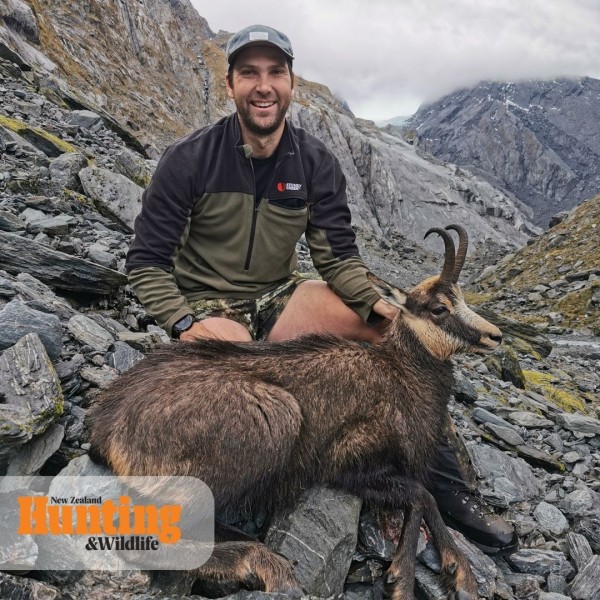
Taken on the faces below Mt Barlow, the author’s buck came to within 20 metres before being taken. The head skin will be used for a future mount at the NZDA Hunting Museum.
As we continued our ascent, searching for a suitable place to glass, Gwyn spotted something in the tussock 50 metres above us. It was a decent bull, and he was staring straight at us. We had been spotted, and neither of us was prepared. By the time I unshouldered my rifle and loaded a round, he had vanished. We couldn't believe it - we had only been in the block for less than three hours and already missed a golden opportunity. Despite our disappointment, we spent the rest of the morning surveying the country on both sides of the valley, spotting animals high up on the faces or on the tops above 2000m. It became clear that if we wanted to have a chance at a mature bull, we needed to up our game and set up camp at a higher elevation.
After a 3am mauling from the resident kea population, we had an early start to the day. With head torches on, we made our way back up the moraine wall and then onto the leading ridge above base camp. The snow had started to melt and clear from the day before, but most of what was left down low had turned to ice. With crampons and ice axes on, we continued our way up the ridge, looking for a route to the top while taking every opportunity to glass the surrounding country.
As we worked our way down river, we soon realised that the steep faces and ice-covered chutes were going to make getting up onto the ridgeline of the Adams Range difficult.
It wasn't long before we spotted our first animals - a dominant bull and his nannies feeding out into the sun about 1km downstream, and another 5 bulls on the summit of Mt Adams. It was impressive and awe-inspiring.
We spent the day behind the binoculars and spotting scope, trying to find a way to access the tussock basin below us. With limited rope and no clear path to traverse the steep faces below our campsite, it was clear that we were going to need to backtrack and look for a lower path if we wanted to have a chance of getting close to the big bull, we had seen that morning.
On dusk, we spotted two more bulls feed out of the scrub directly below our camp. One looked to be a mature animal with good length and plenty of mass, but with no clear access to recover him, we were left to watch them through the glass as they fed off into the dark.
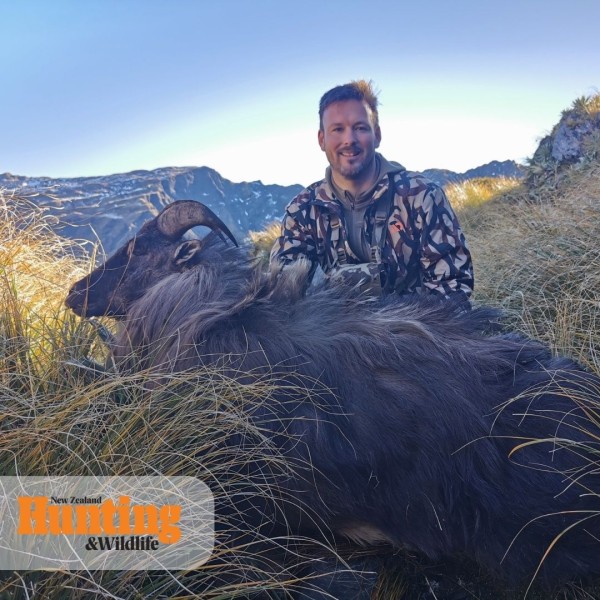
Gwyn spotted a bull feeding ahead of us in the tussock as we headed towards a glacial basin below Mt Barlow. A quick shot secured a good representative head.
With a fast-moving front expected to bring some snow and rain the following day and natural cliff and gut barriers stopping us from moving forward into the basin, we decided to get up early to find an alternative route. The big bull and the nannies had been joined by 3 younger bulls, and the 2 bulls from the night before could be seen making their way through the leatherwood below camp. After packing up, we made our way back upstream, dropping down each gully as we went. With each gully, our hopes of getting into the basin slowly slipped away. We were met with bluff after bluff, and after hours of trying, it looked like we would have to drop right to the river if we wanted to find a way into the basin. Conceding defeat and rueing the missed opportunity, we decided to wait it out until dark in the faces above base camp and then work our way back down to the valley floor to wait out the storm.
As soon as the weather improved after the storm, Gwyn and I headed to up to the peaks again. We headed around to the snow-covered basin facing Mt Kensington where we had seen a bull two days earlier, and I picked a spot in the tussock looking down the river and across a deep ravine. As the light began to fade, a bull appeared out of the Leatherwood, 400m downstream. He gradually fed his way up the face and into the open. Was this possibly the bull we had seen a few days before, I thought? He looked similar but seemed to have more body mass and horn length than the other animal. With no way of crossing the ravine, I had to just watch and wait for him to feed up the face and see if he crossed the steep cliff we had failed to descend earlier in the day. With the fading sunlight on his back, he made his way closer and closer to the cliff. He was a truly impressive bull with a thick mane and all the characteristics of a mature animal. He was now less than 150m away but at the base of the cliff face and on the wrong side of the ravine. I now had him lined up squarely in the crosshairs, and the temptation to squeeze off a round was high. But with fading light and an impassable cliff face below, I was forced to let him walk out of sight in the hope that he would pop out on the other side of the face. As the minutes passed, it became clear that he wasn't going to reappear. He had disappeared down the ravine and out of sight.
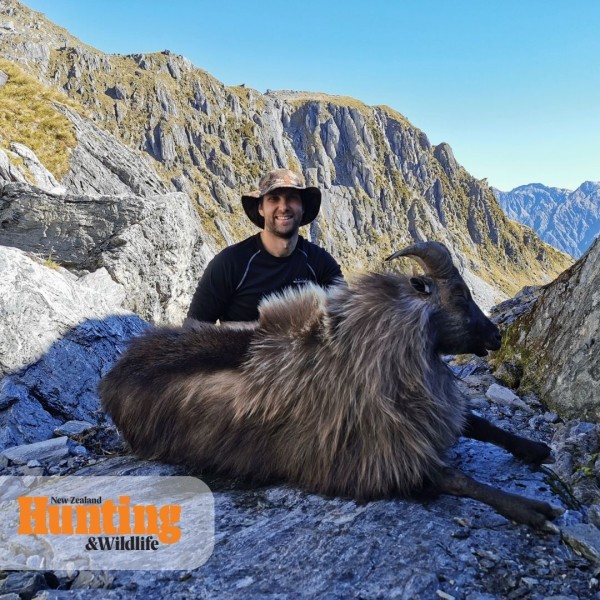
With thick 9-inch+ bases and close to 13 inches of broomed-off horn, my bull was an impressive animal. We estimated him to be 12 years old, and he wore the battle scars to prove it.
The next day, we awoke to rain and low cloud. We spent the morning getting drenched, following the river downstream, hoping to find a pathway up into the basin above, only to find the path more challenging than the cliffs we had traversed the day before.
It was time to regroup and explore some new country, and with good weather ahead of us, a plan was set to cross the river the following day and head up to explore the faces below Mt Barlow. The old boys had spotted a good chamois buck in the scrub across the river from camp and young bulls further upstream, so we were excited to get into some new country.
After a slow start to the morning, due to another night of kea’s attacking our camp and tents, we hit the track at about 9am and followed a game trail upstream, looking for a safe place to cross the now silt-grey river.
Taking our time, we started to see fresh chamois sign along the riverbed. It was headed upstream and looked to be a lone buck’s prints. We continued our way up to the head of the valley, and there, hidden at the top of the moraine wall, I spotted him. It was a buck, and he was onto us. Only this time, he didn't disappear over the ridge like the bull tahr. Instead, he made his way down the face straight towards us.
We couldn't believe our luck. We both watched him as he made his way slowly down the scree. He was a decent animal and looked to be over nine inches with a thick, dark, winter coat. It was decided that we would take him. Having both shot decent bucks over the years, a quick game of Paper, Scissors, Rock was in order to determine the shooter. And with rock beating scissors, I was up.
The buck was now less than 50m away and still making his way closer. I set up on top of my pack, chambered a round, and squeezed the trigger. He was down and less than 20m away from us. We couldn't believe it, what an exciting encounter. After stashing the head skin, which Gwyn wanted to use for a future mount at the NZDA Hunting Museum, in a kea-proof cave and packing some back steaks for dinner, we made our way across the river and up to the hanging basins below Mt Barlow.
The birdlife was notable, with rock wren and kea sighted as we made our way up into the tops.
It was a hard and steep slog up and up. Eventually, we set up camp and headed off to glass the surrounding country. It wasn't long before we spotted several bulls feeding along the tops above camp and then a few more near the summit of Mt Barlow. It was a promising start to the evening's hunt.
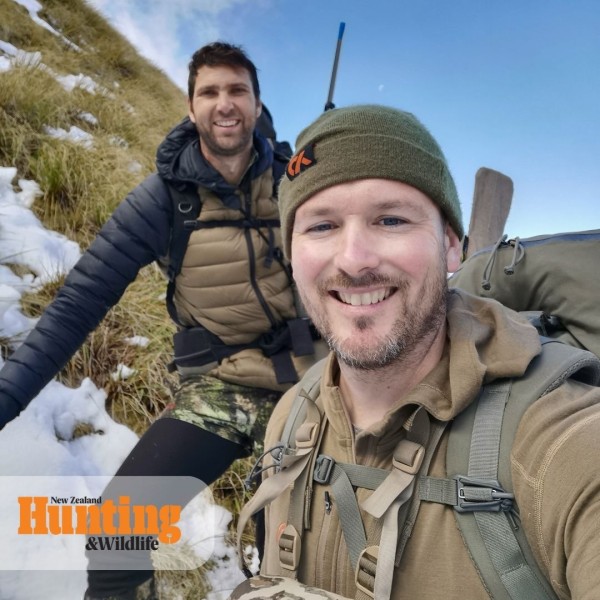
Crampons and ice axes were essential as we encountered snow and ice as we gained altitude.
As we made our way along the ridge and closer to the old glacial basin, Gwyn spotted a bull feeding ahead of us in the tussock and took a shot. The bull was down, and we had finally gotten what we had come for. On close inspection, we judged him to be about 7 years old and pushing 12.5 inches. Not quite the 14-inch monster Gwyn had been hoping for, but a solid representative of the species nonetheless. He had a magnificent mane. A thorough measure-up would need to wait for the following morning. With plenty of daylight left and the bulls above us unfazed by the shot, the call was made to leave Gwyn's bull to recover in the morning.
We continued up and up. Once we reached the edge of a hanging basin, the bulls that we had seen from camp had moved further down the ridge. Two more bulls were spotted on a near-vertical face directly below Mt Barlow, and a group of nannies and young bulls were making their way along the ridge directly above us. It couldn't get any better!
After a few hours behind the spotting scope, we decided that one of the bulls on the vertical face, 350m in front of us, was the pick of the bunch and worthy of closer inspection. As we sidled our way around the face to close the distance, we noticed that the young bulls and the nannies above us had been joined by a bigger animal. We quickly got the spotting scope on him and ranged him at 320m. He was an absolute thumper, with visibly more sweep than the mature bull we had been pursuing. The only problem was he was on the move and headed in the wrong direction. With no cover to close the distance and a steep angle to allow for, it was difficult to find a suitable shooting rest. Each time we felt comfortable, he moved again, and we had to readjust. The nannies ahead of him were beginning to disappear over the ridge, but the young bulls behind him had taken his attention just long enough for us to get into position. "342m," Gwyn whispered, "are you ready?" Not really, I thought to myself, but this was going to be our last chance before he reached the ridge line. I chambered the round, took a deep breath, and squeezed the trigger. Crack! A couple of inches high, you hit the rock face above him, take another shot," Gwyn replied. As I loaded the next round and got into position, blood began to drip down my face. Scoped! How embarrassing, and to make things worse, the bull had reached the ridge and was disappearing over the other side. Another opportunity lost. As we dealt with my wound and had a bit of a laugh about my misfortune, Gwyn noticed that the two mature bulls were still surprisingly feeding along the face. "Are you going to have another crack?" he said. “Absolutely!” I replied.
We made our way another 10m along the ridge to a flat, moss-covered mound just above a small waterfall. The position was solid, and the bulls had moved further down the face and found a good spot above a tussock face on the opposite side of the basin.
Gwyn got set up on the spotter and ranged the bigger of the two bulls. “'280m,” he said, “take the bull on the right.”
And without much further thought, I squeezed off the round dropping him.
The big bull's legs tucked up underneath him, and he rolled slowly down the tussock and behind a rock. He was down, but with fading light, we would have to wait until tomorrow to see how good he was.
After a sleepless night, we woke up early to recover our animals.
Gwyn's tussock bull was first, and on closer inspection, we confirmed him to be about 7.5 years old with a thick mane and just shy of 12.5 inches of horn on both hooks. Next up was my redemption bull, who proved a little trickier to recover after falling into a creek bed above a small waterfall. With thick 9-inch+ bases and close to 13 inches of broomed-off horn, he was an impressive animal. We estimated him to be 12 years old, and he wore the battle scars to prove it. I couldn't have been happier.
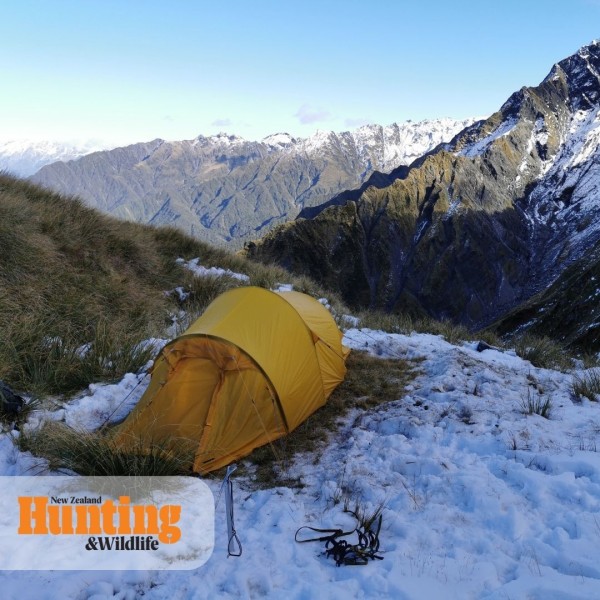
It was a hard slog uphill from our base camp drop off point but once camp was set up, we were right in the middle of excellent hunting.
After taking the head skins off both bulls, we returned to camp to spend the afternoon glassing the valley and enjoying what was left of the good weather.
With another bad weather front on its way, the plan was to spend one more night on the tops before heading back to base camp to pack up for the early flight out the following morning.
That night, we were woken by what sounded like a thunderstorm rolling down from the head of the valley. We were both nearly asleep and heard it rumbling towards us. It was an earthquake that shook us for about 10 seconds. It was a terrifying experience which had both of us out of the tent, looking for rock fall from the cliffs above.
The next day, we made our way back down off the tops and through the head of the Barlow River. The river was running glacial blue again, and we noticed half a dozen kea bathing in the stream as we waded through the water.
Making our way up the scree slope to the spot where we had stashed the chamois skin, we noticed a few more kea, and then a few more. We had managed to count 32 birds, and all of them seemed a little fat and sluggish. It turned out that they had been feasting like vultures on what was left of the chamois carcass left underneath a boulder a few days before, and there wasn't much left of it. These birds were so fat that after gliding down to the river to wash their feathers, they had to hop from rock to rock back up the moraine wall to continue feasting. It was an incredible sight, thankfully they hadn't found the buck’s head skin.
Once we reached base camp we reunited with Peter and Wally. They were eager to hear how we had fared. Gwyn and I we were keen to enjoy a few of the creature comforts that only a good base camp could afford. The block was hard to hunt, and they had not found a shooter.
It had been a classic tahr trip and lived up to my hopes. I was very grateful to be a part of it and for the call-up. Lastly, a special thanks to my wife Candice for looking after our two boys while I spent 8 days in the mountains, and for letting me put my big old trophy bull mount on the wall at our home.

